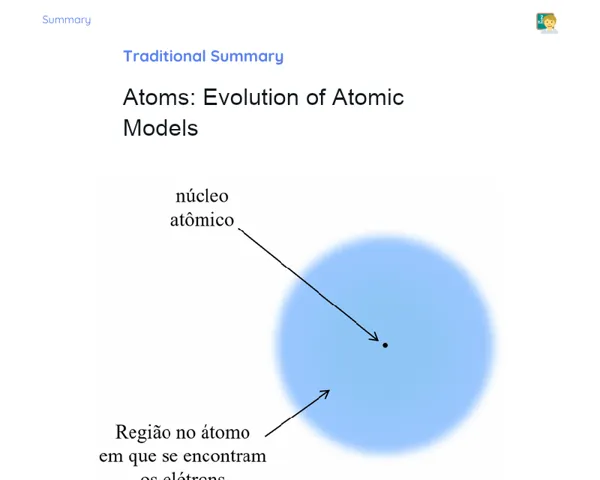Objectives
1. 🎯 Grasp the concept of chiral carbon and its role in the creation of optical isomers.
2. 🎯 Enhance problem-solving skills related to spatial isomers, including identifying different isomers and calculating the total number of isomers within a molecule.
3. 🎯 Apply the theoretical insights into optical isomerism in real-life scenarios and engage in discussions about its significance in our daily lives and advancements in science.
Contextualization
Did you know that optical isomerism played a pivotal role in one of the most significant breakthroughs in medicine during the 20th century? Thalidomide, initially sold as a sedative, was unintentionally discovered when researchers were looking for a safer remedy for nausea in pregnant women. This case is a striking example of optical isomerism, where its two isomeric forms have drastically different effects: one is capable of causing fetal defects, while the other is harmless. This real-world instance shows that understanding optical isomerism can genuinely be a matter of life or death.
Important Topics
Chiral Carbon
A chiral carbon, often termed as asymmetric carbon, is a carbon atom that is attached to four different groups. This feature is essential for forming optical isomers because it enables various spatial arrangements of the molecule, leading to chirality. The presence of a chiral carbon results in two or more isomers that are non-superimposable mirror images called enantiomers.
-
The chirality of carbons is dictated by the spatial arrangement of their substituents rather than the order in which they are bonded.
-
Having one or more chiral carbons in a molecule can significantly boost the number of possible isomers, which is crucial in the realm of pharmaceuticals and biology.
-
The formation of enantiomers from a chiral compound can have serious consequences for the biological and therapeutic effects of medications, as exemplified by thalidomide, where one enantiomer proved safe while the other caused severe developmental issues.
Spatial Isomers
Spatial isomers refer to isomers that vary in the three-dimensional arrangement of their atoms, particularly around a chiral carbon. These arrangements are non-superimposable and resemble mirror images, classified as enantiomers. Recognizing and manipulating spatial isomers is vital in organic chemistry because it influences properties like optical activity and chemical behaviour.
-
Spatial isomers play an essential role in the pharmaceutical and chemical sectors, where the biological activity may hinge on the specific configuration of the molecule.
-
Assessing spatial isomers often requires techniques like spectroscopy and X-ray diffraction to ascertain their three-dimensional formations.
-
The ability to comprehend and manipulate spatial isomers holds practical implications in emerging fields, such as nanotechnology and material chemistry.
Optical Activity
Optical activity refers to the propensity of a substance to rotate the plane of polarized light, a phenomenon linked to the chirality of enantiomers. This characteristic is instrumental in identifying optical isomers and can be quantified using polarimeters. Grasping optical activity is fundamental for the study of optical isomerism and its applications in chemistry and biology.
-
Optical activity can be used to assess the enantiomeric purity of a sample, which is critical for synthesis and drug manufacturing.
-
Different enantiomers of a given substance may produce highly varied pharmacological responses, making their isolation and analysis crucial in the pharmaceutical industry.
-
The exploration of optical activity is also pertinent in fields like astrophysics, where identifying enantiomers in extraterrestrial substances can offer insights into the genesis of life.
Key Terms
-
Chiral Carbon: A carbon atom attached to four different groups, resulting in chirality and the potential to form enantiomers.
-
Enantiomers: Optical isomers that are non-superimposable mirror images of one another, derived from molecules with chiral carbons.
-
Optical Activity: The ability of a substance to rotate the plane of polarized light, observed in enantiomers due to their chirality.
For Reflection
-
How has the discovery and comprehension of optical isomerism impacted the development of new medicines and therapies?
-
Why is it vital for the chemical and pharmaceutical sector to differentiate and isolate enantiomers?
-
In what ways does the chirality of molecules influence domains like nanotechnology and materials chemistry?
Important Conclusions
-
In this lesson, we delved into the captivating domain of optical isomerism, emphasizing how chiral carbons shape the development of spatial isomers and their exceptional optical activity.
-
We recognised that chirality goes beyond chemistry, bearing significant real-world ramifications, especially in drug development and innovative technologies.
-
We discussed practical instances, including thalidomide, highlighting the necessity of differentiating between enantiomers because of their vastly differing biological impacts.
To Exercise Knowledge
- Research and present a case of optical isomerism in a medicine or food item, elaborating on how this distinction can influence its safety and efficacy. 2. Use straightforward molecular models (which can be created using toothpicks and marshmallows at home) to build and visualize spatial isomers of a straightforward molecule, such as 2-butanol. 3. Write a brief article explaining how optical isomerism affects research in nanotechnology, focusing on current or potential applications.
Challenge
Mad Scientist Challenge: Use recyclable items to craft a simple 'enantiomer detector' that can differentiate between enantiomers of a pure substance. Present your device and demonstrate its functionality in a short video.
Study Tips
-
Utilize flashcards to frequently revise key terms and concepts of optical isomerism. This practice will reinforce your understanding and prepare you to discuss the topic confidently.
-
Watch videos illustrating molecular models and experiments in optical isomerism, allowing you to visualize the theory in action and grasp complex concepts more effectively.
-
Attempt to teach what you've learned to a friend or family member. Teaching can be an excellent way to solidify your knowledge, as it requires you to organize and articulate your insights clearly.


